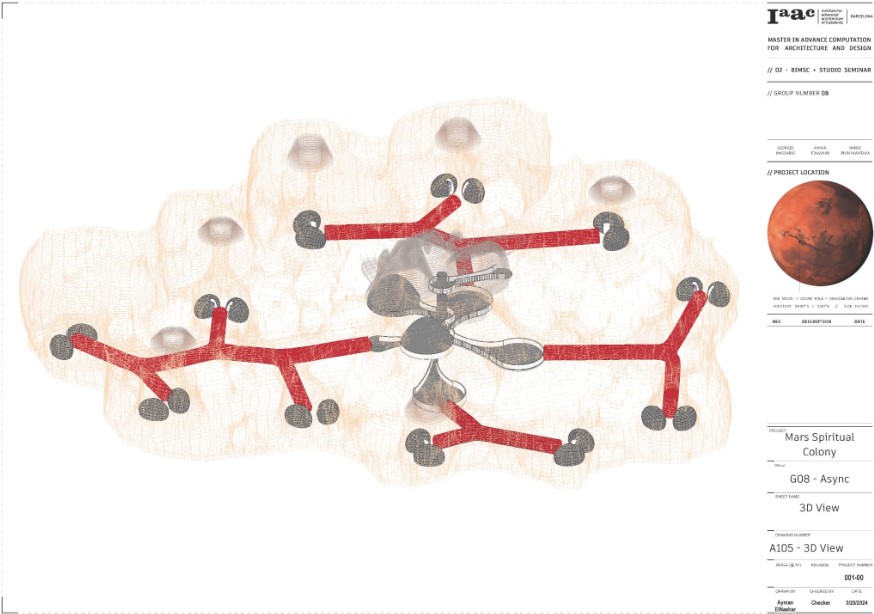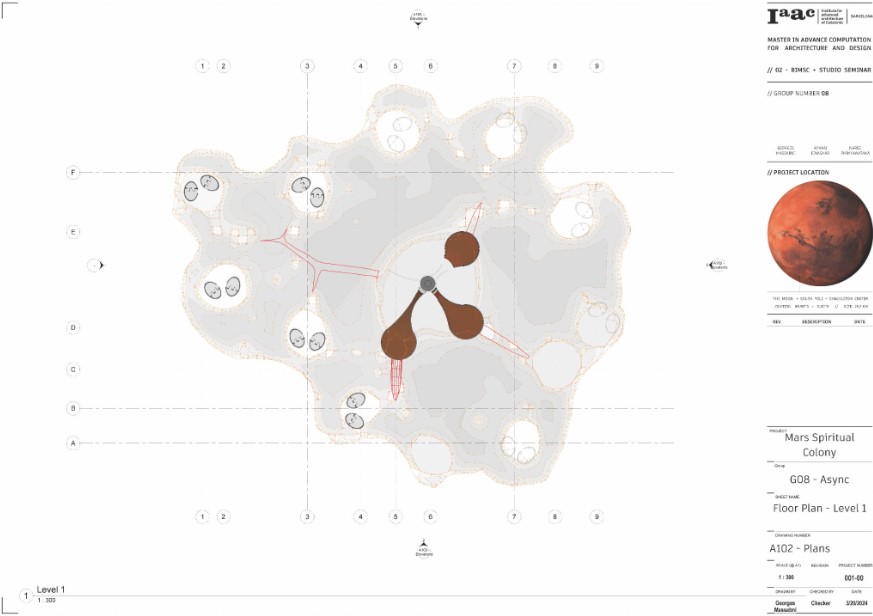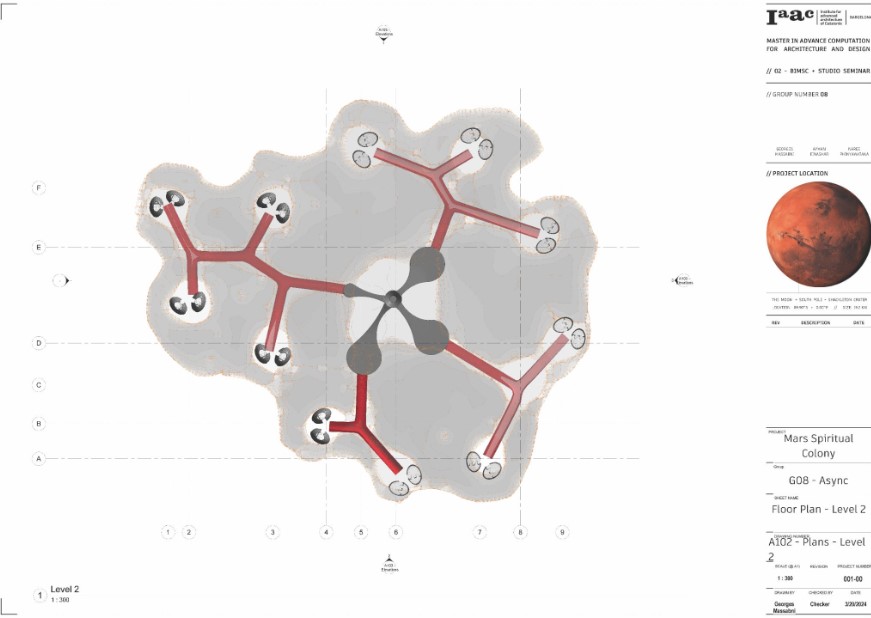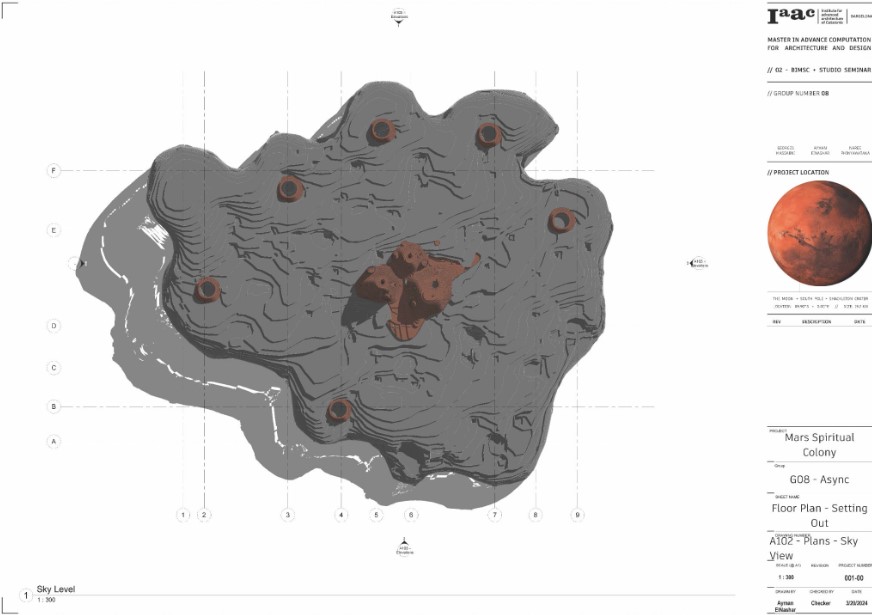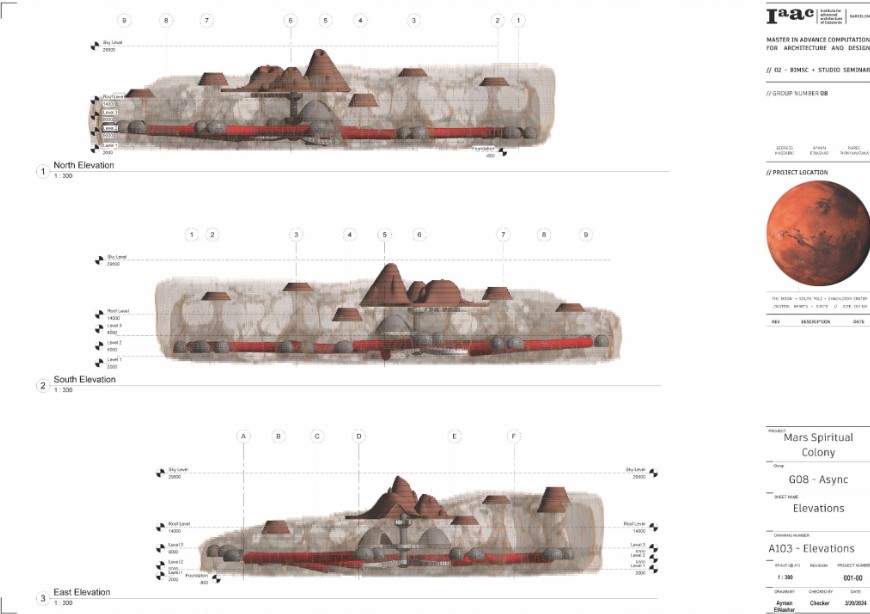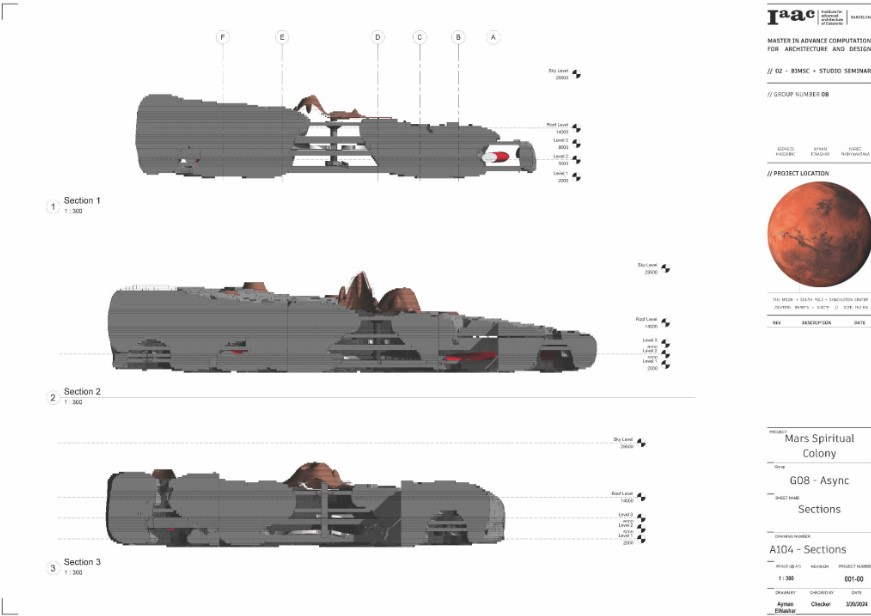Our group project is Ant Hill Colony on Mars, which has both above/below ground elements and underground heart, tunnels and pods. The project concept derived from “learning from ant colony,” therefore, the geometry shapes were more organic and natural. Originally, we recreated this by starting with LiDAR technology to identify the soil characteristics, then applying the ants swarm algorithm to try to identify the most efficient path between the food storage, in our case, the residential pods.
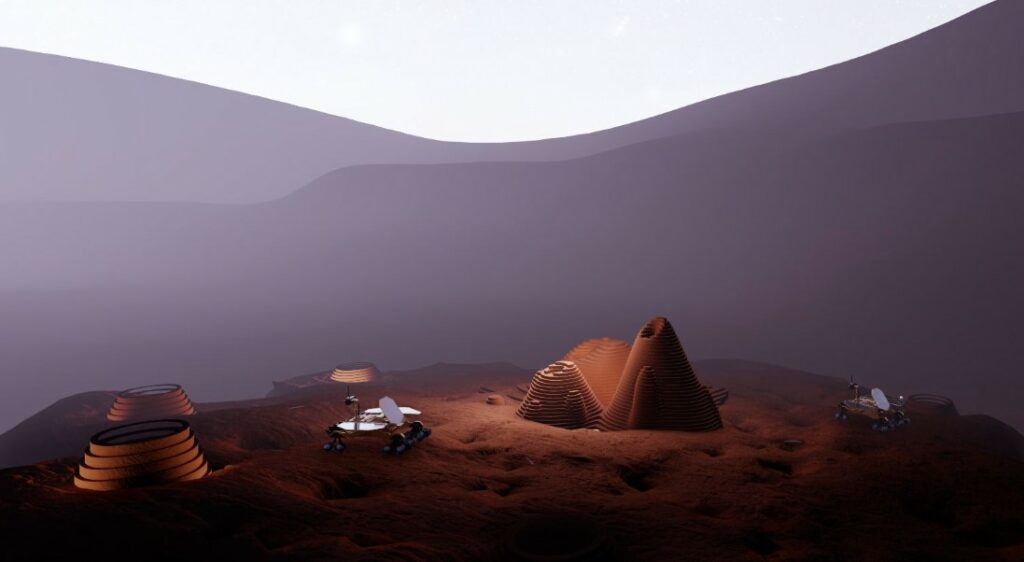
We started our first integrative model around mid-term. For our BIM documentation using rhino inside, the main challenge was the organic nature of the project. We knew early on that our geometries were very complex and only some parts like tunnels and pods were simple enough for us to explore parametric modelling with Revit. We explored on direct import and parametric panels for our residential pods.
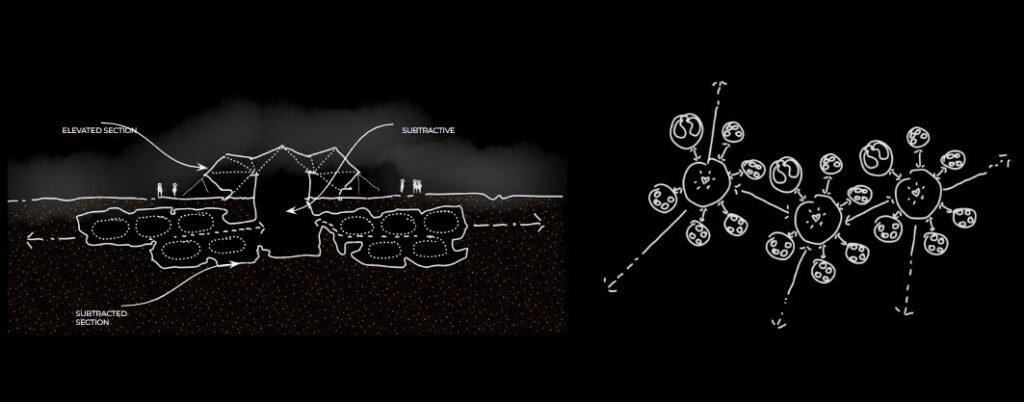
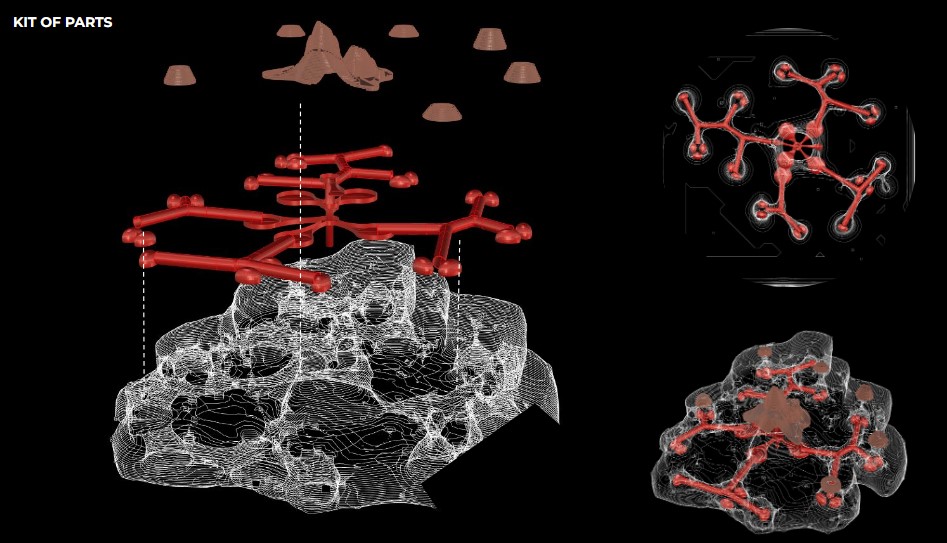
For our collaborative workflow, after of course trial and error, we organized it in a way similar to our initial computational approach, dividing it into above/below ground and subtractive elements then breaking those elements down further for detailing. Using different speckle branches for the various elements and moving back and forth between our grasshopper scripts and eventually rhino inside for BIM documentation.
For our below ground soil excavation part and anthills, we directed import these elements as the geometries were very unique developed through our grasshopper script. For the pod shell, we explored parametric panel system for the shell portion through quad mesh.
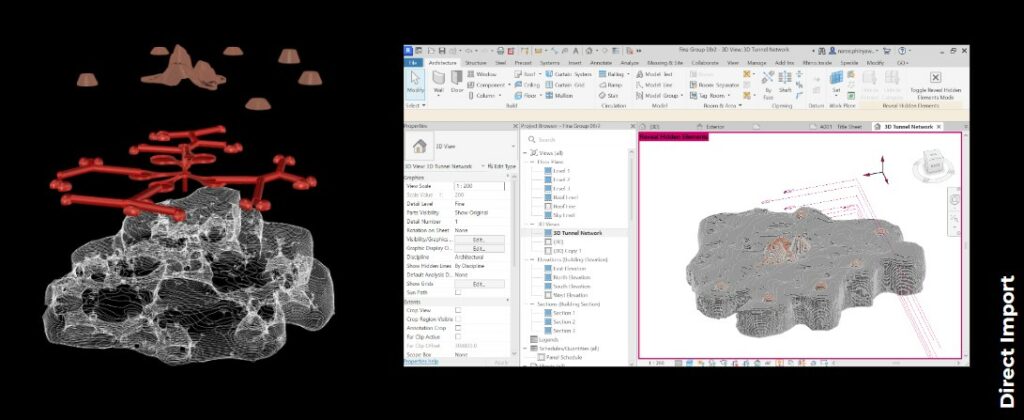
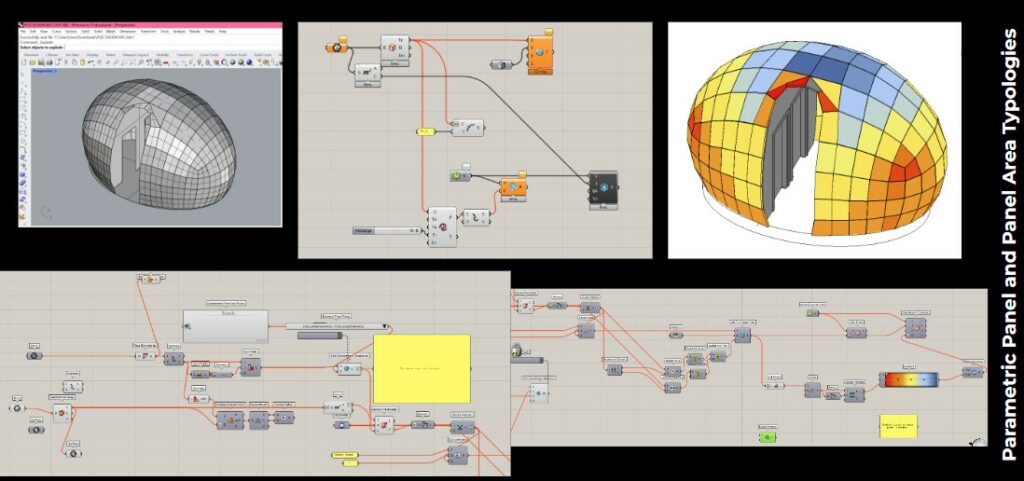
The heart was imported through Rhino.Inside and floors, walls and railings were created in Revit with native objects.
We thought of an automation idea to optimize the workflow, the issue with our approach was all hanging on the tunnels simulation which was linked to a voxel grid of 70,000 points. That took forever to compute.
Thereafter, we explored the idea of an automated process that analyses the original state of the critical curves, as we manipulated those curves, that would analyse the number of typical tubes sections as well as quantity of soil dug. If more optimized than the initial state then a webhook bot would activate the script to compute the geometry. That would help us test the design quickly without the grasshopper compute time.
Overall, it was a very challenging and enriched journey that allowed our group to learn and explore many parts of Revit, Rhino.Inside and parametric modelling in BIM environment for our studio project. We enjoyed our journey as we learn through trial and error along the way.
